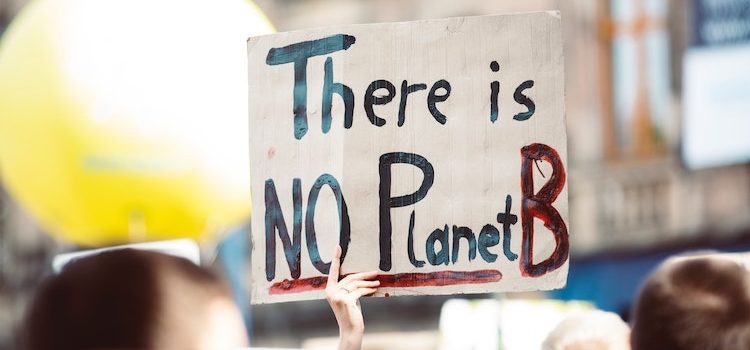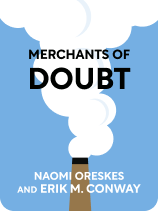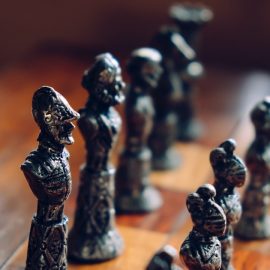

This article is an excerpt from the Shortform book guide to "Merchants of Doubt" by Naomi Oreskes and Erik M. Conway. Shortform has the world's best summaries and analyses of books you should be reading.
Like this article? Sign up for a free trial here .
What role does doubt-mongering play in the recent climate change debate? What is the science? What doubts are raised?
Merchants of doubt have been engaged in the climate change debate from the beginning. These are people or groups who seek to discredit science behind the policies that threaten their agenda. Naomi Oreskes and Erik Conway, the authors of Merchants of Doubt, updated their book in 2020 to cover highlights from the past decade, specifically California law and electric cars.
Read more to learn about the recent efforts of merchants of doubt in discrediting the climate change debate.
The Climate Change Debate Is Still Going Strong
The original edition of Merchants of Doubt was published in 2010 when, despite the science, the merchants of doubt (MODs) had so effectively merchandised doubt that there was little policy change on climate change. When Oreskes and Conway updated the book in 2020, the MODs were still at work on the subject.
Though doubt-mongering ultimately failed to stop U.S regulation on action on tobacco, the ozone hole, and acid rain, it did delay regulation by decades. The authors argue that we don’t have that kind of time when it comes to climate change—we only have around 10 years to change things before the earth would be irreparably changed.
In this article, we’ll look at some of the highlights from the past decade when it comes to the climate change debate.
(Shortform note: Parts of this section appeared in the original book’s Postscript.)
California’s Law
California law is a component of the climate change debate. In 2006, the California Global Warming Solutions Act (AB 32) went into effect and required the reduction of greenhouse gases to 15% below the 1990 levels. The deadline was 2016.
The MODs claimed:
- Wind and solar power are too expensive. (In reality, both types of energy cost the same or less than energy generated by fossil fuels—solar is about $50 per megawatt-hour and wind $30-50 per megawatt-hour. Today, it’s more expensive to run a coal plant than build a new one powered by renewables.)
- The legislation would kill jobs and hurt the economy. (In reality, there are now fewer jobs in fossil fuels than in renewables, and renewables are growing quickly.)
- Renewable energy is unreliable. (In reality, most blackouts aren’t caused by problems at plants; they’re caused by transmission failures.)
California made most of its reductions in the electrical utility sector and met the target in only 10 years. Regulating emissions didn’t cause any of the problems the MODs warned would come to pass. From 2006-2016, the population increased and the economy grew 41%. This showed that all of the MOD’s claims were unfounded.
Like California, lots of other states have good conditions for solar and wind power, so the MODs keep reprising the doubt-mongering arguments they tried in California.
There is one real problem with wind and solar energy in Texas—sometimes, there’s too much energy, which drives the spot market prices into the negatives. The grid manager in California reduces production to deal with it, but there are better (though currently more expensive) options already in existence:
- Grid integration, which is when the entire country’s grid is connected so that when there are surpluses in one place (say, a windy day in Oklahoma), the energy can be transferred somewhere else where there’s a shortage (nighttime in Nevada). This would require the cooperation of all states and the federal government.
- Storage. Excess energy can be stored in batteries or by using it to pump water uphill and running it through a hydroelectric generator to access it again.
- Adjust demand, which involves changing the price of electricity depending on how much is available (for example, electricity is cheaper at night) in the hopes that consumers will adjust their usage and the grid will be more stable. Not all consumers pay attention to adjustments, and there’s a time delay, but some companies have been working on smart appliances that can automatically adjust their usage as the prices change. For example, a fridge might turn itself off for a moment when the price jumps.
Electric Cars (EVs)
Moving from fossil-fuel-powered cars to electric ones is another way to reduce emissions, so electric vehicles (EVs) are relevant to the climate change debate. However, EVs have been slow to catch on, even in California. In May 2019, less than 3% of passenger vehicles were electric.
Electric cars are less numerous for three reasons:
1. Misinformation. MODs spread disparaging information about EVs, often on social media where there are no gatekeepers such as journalists to refuse to publish them. Their major tactics are:
- Complaining about subsidies and incentives.
- Claiming EVs are elite. (This is untrue; there are affordable models.)
- Claiming EVs are worse for the environment. (Also untrue.)
2. Retail infrastructure. Many people aren’t aware that electric cars perform well or are available because:
- Most people buy cars from dealers, and dealers often don’t like EVs because they don’t break down very often. Therefore, dealers don’t make enough money from repairs.
- Only one of the major U.S. car manufacturers makes EVs (General Motors’ Chevy Bolt).
- Tesla Motors doesn’t advertise and doesn’t have a dealer network, and some states don’t allow direct sales.
3. Charging infrastructure. Charging stations aren’t nearly as widespread as gas stations, which limits where people can drive and live (most people who have EVs charge them at home, and if you rent, you may need your landlord’s signoff to install a home charger).
The climate change debate will continue as forces on all sides of the issue remain strong.

———End of Preview———
Like what you just read? Read the rest of the world's best book summary and analysis of Naomi Oreskes and Erik M. Conway's "Merchants of Doubt" at Shortform .
Here's what you'll find in our full Merchants of Doubt summary :
- How doubt-mongering techniques are used to discredit those who threaten a person or company's agenda
- The 10 most common doubt-mongering techniques
- Steps you can take to protect yourself from doubt-mongering






